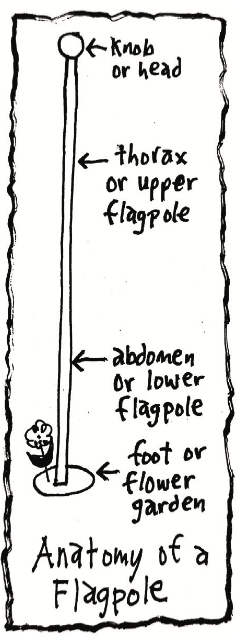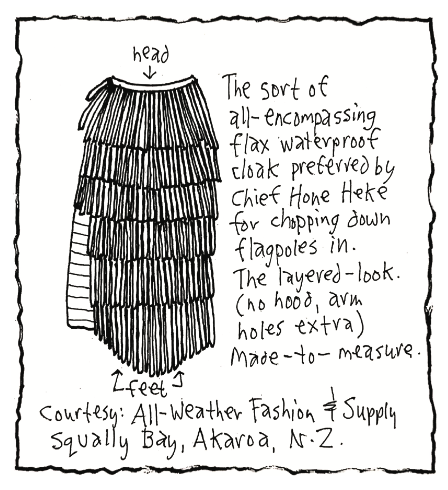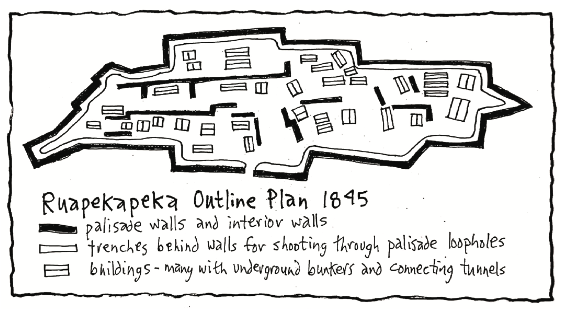You can purchase Nieuw Zeeland An English-Speaking Polynesian Country With A Dutch Name: A Humorous History of New Zealand by Geoffrey Corfield from Amazon today.

Britain sends some 11,000 soldiers to New Zealand from 1840-1872. Although casualties are small (total British-Maori killed – 3,000), there are many engagements off and on over those years. The Maori who remained neutral or supported the government however, always far outnumbered the Maori who fought against the government. But those who fought, really fought. And they did so in a war of two rounds.
Nelson (1843)
Up to this point the history of New Zealand has been dominated by the North Island. The South Island has been much quieter. But there are three colonies started there and it now starts to be involved more. In a very short period of time though it will zoom past the North Island in population, before falling back to second place again.
There were far fewer Maori living on the South Island (even today only 10% of the total Maori population of approx. 600,000). If there were 49 main tribes in the North Island, there were only four in the South, and only one living along the east coast south of the northeast corner.
The first British settlement on the South Island is 77 colonists of The New Zealand Company at Nelson (1841). The land was bought from Chief Te Rauparaha on Kapiti Island, who agreed they could have a settlement in Tasman Bay, and they chose the site of Nelson for its harbour.
But the local Maori at Nelson knew nothing about it (they’d been conquered by Te Rauparaha). Within one year Nelson has 2,000 settlers and needs more usable land. They liked the lands along the Wairau River valley (Blenheim), and considered it within their land purchase area; so in 1843 they send a survey party there to survey it into lots. The Maori pull up the survey stakes, destroy the surveyor’s huts, and steal their equipment. Their leader is Te Rauparaha.
Nelson sends 49 armed settlers by ship to Cloudy Bay where they go looking to arrest Te Rauparaha. They find him at Tuamarina. But when they go to arrest him there is a shootout with the Maori (22 settlers/6 Maori killed). The Governor blames the settlers, and the Maori call the Governor “soft as a pumpkin”. This is the first armed conflict in the British-Maori Wars, and the only British-Maori armed conflict to ever occur on the South Island. From here on in the North Island has war, and the South Island doesn’t.
The Bay of Islands Flagpole War 1844-1846

When the capital is moved from Russell to Auckland, half the white turnip population and most of the trading ships leave too. Chief Hone Heke is not happy. He flies an American flag from his canoe, demands payment from the government for being sworn at, and cuts down the British flagpole at Russell. The Flagpole War begins.
The flagpole is replaced. Hone Heke cuts it down again. The flagpole is replaced. Hone Heke cuts it down again. The Governor sends for more troops from Australia and offers a reward for the capture of Hone Heke: Serial Flagpole-Cutter-Downer Hone Heke offers a reward for the capture of the Governor: Serial Flagpole-Putter-Upper.
The British put up a fourth flagpole “guarded by iron bars, hoops and chain”, and build a fortified blockhouse around it garrisoned by soldiers. The missionaries try to get Hone Heke to respect the Treaty of Waitangi, which he was the first to sign, but he calls it “all soap, very smooth and oily, but treachery was hidden under it”.
Hone Heke attacks Russell with 600 warriors, captures the blockhouse, cuts down the flagpole a fourth time, and burns much of the town (13 British/30 Maori killed). Most of the remainder of the population of Russell leaves for Auckland, and The Bay of Islands never again recovers its original position of importance in New Zealand.

Rival tribes (perhaps even some that are co-signatories of The Confederation of the United Tribes of New Zealand), join the British to attack Hone Heke’s fortress at Okaihau. Hone Heke then attacks the British at Pukenui. The British/Maori then attack Hone Heke at Okaeawai. The bravery of one British officer here is so admired by the defenders that they call out to him that they will let him retreat safely so they don’t have to kill him. After 10 days Hone Heke abandons Okaeawai and the British find it empty (41 British/10 Maori killed).
Peace is proposed to Hone Heke and land demanded. “Sir, if you are desirous to get my land, I shall be equally desirous to retain it. Do not be hasty about the land. The land is enduring, but man passes away. God has made this country for us, it cannot be sliced.”
The British build a road and drag cannons south from The Bay of Islands to attack 200 Hone Heke warriors defending the imposing fortress at Ruapekapeka (called “The Bat’s Nest”). After 12 days bombardment, a force of 700 British and 1,300 Maori creep into the fort and catch the defenders by surprise (they did not think the British would attack on a Sunday). Hone Heke escapes again (12 British/25 Maori killed).
The British commanding officer reports the value of the Maori allies in capturing the fort, and is very impressed by its fortifications: hidden inner defences, embankments, fortified huts, strong walls, bomb-proof shelters, tunnels roofed with heavy logs, connecting trenches.

You can purchase Nieuw Zeeland An English-Speaking Polynesian Country With A Dutch Name: A Humorous History of New Zealand from Amazon today.

If you enjoyed this BFD article please consider sharing it with your friends.
